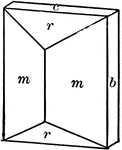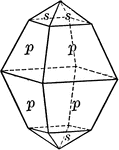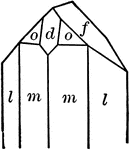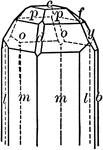
Scalenohedron
"This form consists of twelve scalene triangular faces. These faces correspond in their position to…

Scalenohedron
"...bounded by twelve scalene triangles, and with the general indices {hkl}." -The Encyclopedia Britannica…
!["The zig-zag lateral edges [of a scalenohedron] coincide with the similar edges of a rhombohedron..." -The Encyclopedia Britannica 1910](https://etc.usf.edu/clipart/35500/35584/scale2_35584_mth.gif)
Scalenohedron with inscribed Rhombohedron
"The zig-zag lateral edges [of a scalenohedron] coincide with the similar edges of a rhombohedron..."…

Scapolite
"A crystal of scapolite, upon which the faces of the third-order pyramid are shown." — Ford, 1912
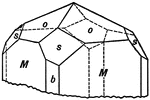
Scapolite
This figure shows a combination of forms sometimes observed on the silicate Scapolite, with the unit…

Scheelite
"Tetragonal; tri-pyramidal. Crystals usually simple pyramids of first order. Closely resemble isometric…
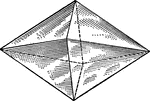
Second Right Square Octahedron
"Science has succeeded in classifying the thousands of known crystals in six systems, to each of which…

Second Right Square Prism
"Science has succeeded in classifying the thousands of known crystals in six systems, to each of which…

Simple Crystal of Gypsum
"...to be cut in half by this plane (the twinned plane, reference Twinned Crystal of Gypsum) and one…

Six-sided Pyramid
"Science has succeeded in classifying the thousands of known crystals in six systems, to each of which…
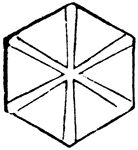
Snowflakes
A frozen moisture which falls from the atmosphere when the temperature is 32 degrees or lower. It is…
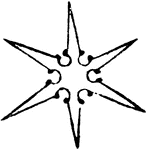
Snowflakes
A frozen moisture which falls from the atmosphere when the temperature is 32 degrees or lower. It is…
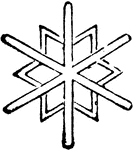
Snowflakes
A frozen moisture which falls from the atmosphere when the temperature is 32 degrees or lower. It is…

Snowflakes
A frozen moisture which falls from the atmosphere when the temperature is 32 degrees or lower. It is…
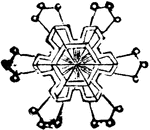
Snowflakes
A frozen moisture which falls from the atmosphere when the temperature is 32 degrees or lower. It is…

Snowflakes
A frozen moisture which falls from the atmosphere when the temperature is 32 degrees or lower. It is…
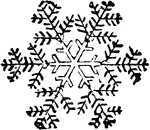
Snowflakes
A frozen moisture which falls from the atmosphere when the temperature is 32 degrees or lower. It is…
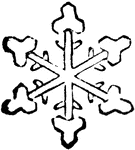
Snowflakes
A frozen moisture which falls from the atmosphere when the temperature is 32 degrees or lower. It is…

Snowflakes
A frozen moisture which falls from the atmosphere when the temperature is 32 degrees or lower. It is…
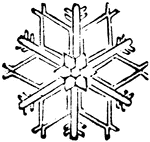
Snowflakes
A frozen moisture which falls from the atmosphere when the temperature is 32 degrees or lower. It is…
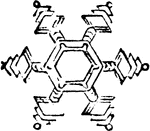
Snowflakes
A frozen moisture which falls from the atmosphere when the temperature is 32 degrees or lower. It is…
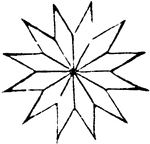
Snowflakes
A frozen moisture which falls from the atmosphere when the temperature is 32 degrees or lower. It is…
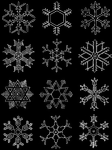
Snowflakes as Described by William Scoresby
"The aqueous vapor of the atmosphere precipitated in a crystalline form, and falling to the earth in…
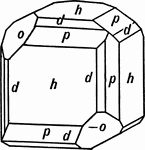
Sodium Chlorate
This is a crystal of Sodium Chlorate, exhibiting the tetrahedron (-o) and the pentagonal dodecahedron…
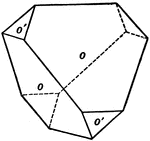
Sphenoidal Crystallization
An example of sphenoidal crystallization is Iron-Copper-Sulfide (FeS_2_Cu), also known as chalcopyrite.
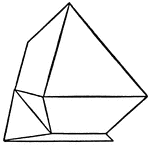
Spinel Contact Twin
This figure shows a contact twin of Spinel, one of the three simplest isometric holohedrons according…
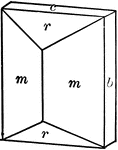
Staurolite
"Orthohombic. Habit prismatic, showing usually a combination of prism with large angle, brachypinacoid,…
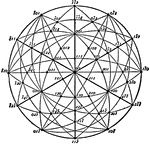
Stereographic Projection of a Holosymmetric Rhombohedral Crystal
"...in this figure the thicker lines are the projections of the three planes of symmetry, and on these…

Stilbite
"Monoclinic. Uniform in cruciform twins. Commonly tabular parallel to clinopinacoid. Crystals usually…
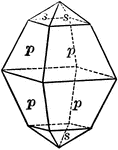
Sulphur
"Resinous luster. Color sulphur-yellow, varying with impurities to yellow shades of green, gray, and…

Sulphur
"Resinous luster. Color sulphur-yellow, varying with impurities to yellow shades of green, gray, and…

Sulphur
"An allotrope of sulphur, when heated to 115 degrees Celcius, will cool to be yellowish-brown, needle-shaped…

Sulphur
This figure shows an orthorhombic crystal of sulphur, showing the forms: (p), (s), (c), and (n).
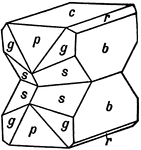
Supplementary Twin
This figure shows a case of a supplementary twin, formed from two hemimorphic crystals, placed symmetrically…
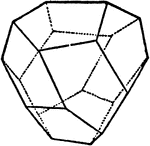
Tetrahedral Pentagonal Dodecahedron
"This is bounded by twelve irregular pentagons, and is a tetartohedral or quarter-faced for of the hexakis-octahedron."…

Tetragonal Bipyramids
A tetragonal bipyramidal crystal where the vertical axis is shorter than the horizontal axes.

Tetragonal Bipyramids
A tetragonal bipyramidal crystal where the vertical axis is longer than the horizontal axes.
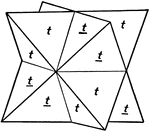
Tetrahedrite
This figure shows two tetrahedrons with parallel axes, and symmetrically placed with reference to the…
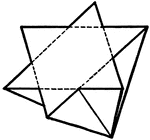
Tetrahedrite Penetration Twin
This figure shows a penetration twin of two tetrahedrons, symmetrical to the octohedral face (tetrahedrite).
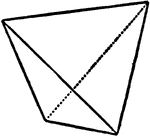
Tetrahedron
"This is bounded by four equilateral triangles and is identical with the regular tetrahedron of geometry."…
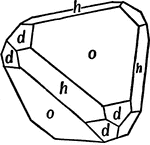
Tetrahedron, Cube, and Dodecahedron in Combination
This form shows a tetrahedron (o), cube (h), and dodecahedron (d) in combination.
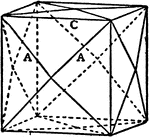
Tetrakis-hexahedron
"Like the triakis-octahedron, this solid is also bounded b twenty-four isosceles triangles, but here…
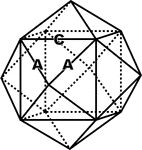
Tetrakis-hexaheron
"Like the triakis-octahedron, this solid is also bounded b twenty-four isosceles triangles, but here…

Titanite
"Monoclinic. Crystals varied in habit. Often with prominent basal plane which is steeply inclined and…
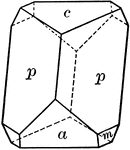
Titanite
"Monoclinic. Crystals varied in habit. Often with prominent basal plane which is steeply inclined and…

Topaz
"Orthohombic. In prismatic crystals terminated by pyramids, domes, and basal plane." — Ford, 1912

Tourmaline
"Tourmaline crystals show the forms of the Rhombohedral Class but with hemispherical development. They…
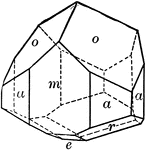
Tourmaline
"Tourmaline crystals show the forms of the Rhombohedral Class but with hemispherical development. They…

Tourmaline
"Tourmaline crystals show the forms of the Rhombohedral Class but with hemispherical development. They…
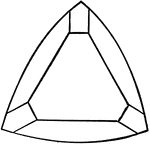
Tourmaline
"Hexagonal-rhombohedral; hemimorphic. Crystals usually prismatic, vertically striated. A triangular…
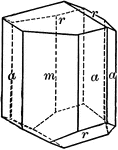
Tourmaline
"Hexagonal-rhombohedral; hemimorphic. Crystals usually prismatic, vertically striated. A triangular…


